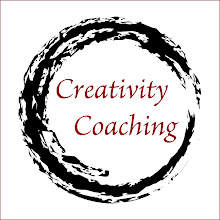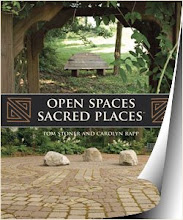 We are all pilgrims on an elusive and endless road. This struck me as I watched the movie The Way. In the film, Martin Sheen plays a conservative, controlling father who is unexpectedly compelled to carry his dead son's ashes across Spain on the Camino de Santiago. For more than 1,000 years, travelers of all stripes have walked from every corner of Europe on this pilgrimage route to the cathedral in the west of the country where the remains of St. James are said to be enshrined.
We are all pilgrims on an elusive and endless road. This struck me as I watched the movie The Way. In the film, Martin Sheen plays a conservative, controlling father who is unexpectedly compelled to carry his dead son's ashes across Spain on the Camino de Santiago. For more than 1,000 years, travelers of all stripes have walked from every corner of Europe on this pilgrimage route to the cathedral in the west of the country where the remains of St. James are said to be enshrined. The moment the movie began, tears welled up in my eyes and spilled over the rims. In the images of the pilgrimage road on the screen, my soul recognized its ancient and ongoing passage through the world. Though I've been to the Cathedral of Santiago de Compostella, I haven't walked the Camino de Santiago. I have, however, heeded the lifelong call of my soul to travel to pilgrimage sites all over the world and plumb the depths of my heart and mind. Over time, each day has become another stretch on an endless pilgrimage road. The terrain of this sacred journey has become fluid and ever-shifting. Every step of the way is an arrival, but not a place to linger. The languages spoken communicate what is beyond words.
What moves me deeply about pilgrimage is its accurate and poetic depiction of the human journey. Despite our attempts to build lives on stone foundations, our spirits continuously flow. Endless streams of consciousness ripple through our minds. Currents of energy shimmer through our bodies. Like shooting stars, we rocket through spacious stillness. But this silent, unmoving background is nothing like the granite ideas we use trying to take root in groundless soil. Instead of the solidity we seek, we pass through intangibility and impermanence. The pilgrimage removes the mask of certainty we hold tightly to our face. It says, let's get real and acknowledge we are all travelers on the way. Compelled by longings we define but know are indefinable, we move toward specific goals that when reached have no tangible substance.
When we acknowledge our lives are a pilgrimage, everything changes. Each person becomes a fellow traveler sharing the same road in his or her unique and personal way. Instead of going home at the end of the day, each step becomes an adventure and a homecoming. If we're tired, we learn to rest where we are. When we're hungry and thirsty, we learn the local language for finding food and drink. Lost and alone, we find companionship and direction from those nearby or from the compass in our soul. Instead of inhabiting a prison of dead routine, we dwell in a living landscape; each building and tree breathes; each event and relationship is a dialogue of life speaking with itself through that place and interaction. Life is far from what we expected and the journey is a mystery revealing ever deeper surprises.
Whether we take a dramatic walk along the Camino de Santiago or stroll down the path of a so-called quiet life, we have a choice. Fight the journey by straining to construct a solid home or engage our life as an unfolding wonder. We can either try to stand rigid in predictable formation or walk with nibble steps, responding to the music of the way. On second thought, we really don't have a choice. We may try to refuse the call of the pilgrim's road, but it can't be refused forever. No matter how tightly we struggle to build a solid house on immovable foundation, the earth eventually quakes and force us out the door. Each morning, we might as well lift the packs of experience and grasp our walking sticks of our skills. We might as well give in to the tug of our spirits to explore this confounding and wondrous world. We might as well greet each other as endless pilgrims and bid each other well on our way. Because we're already on the road and we always wandering through this endless world.







